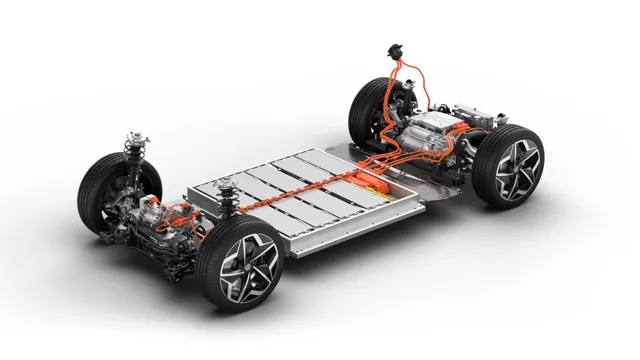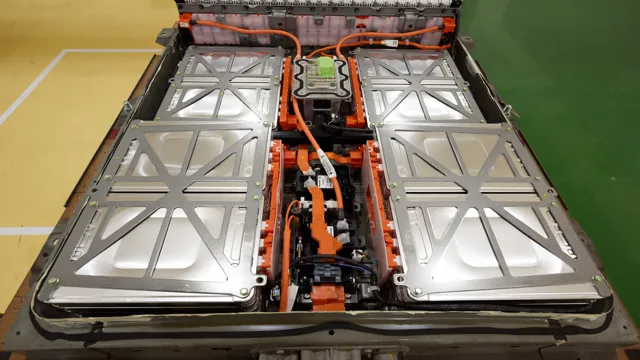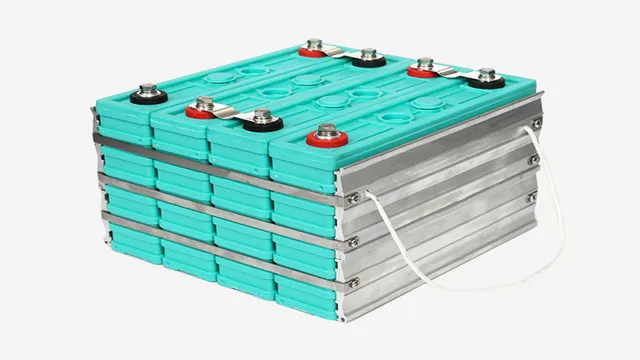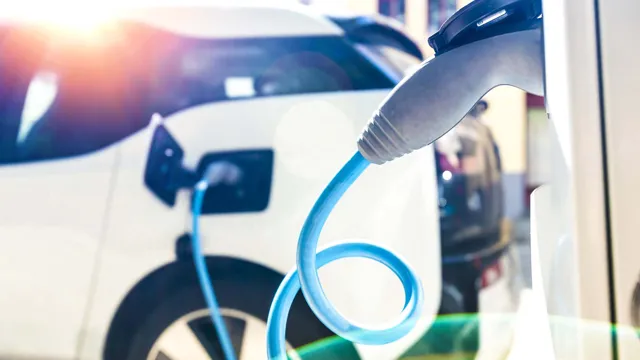Revolutionizing the Road: The Future of Electric Cars with Efficient Motors and Batteries
Electric cars are becoming more and more common on our roads, and it’s no surprise why. These vehicles are environmentally friendly, energy-efficient, and can save you a significant amount of money in the long run. But how exactly do electric car motors and batteries work together to make this possible? In this blog, we’ll delve deeper into the inner workings of electric cars and discuss the technology behind their electric motors and batteries.
So, grab a cup of coffee and let’s explore the world of electric cars!
Types of Electric Car Motors
When it comes to electric cars, the most important components are the electric car motors and batteries. Electric car motors come in three types: AC induction motors, permanent magnet motors, and switched reluctance motors. AC induction motors are the most commonly used in electric cars due to their simplicity, reliability, and efficiency.
Permanent magnet motors use magnets to generate torque and offer improved performance and efficiency, which is why they’re often used in high-performance electric cars. Switched reluctance motors operate by synchronizing with an external control system and offer high efficiency and low cost. As for the batteries, there are several types, including lithium-ion, nickel-metal hydride, and lead-acid batteries.
Lithium-ion batteries are the most commonly used in electric cars due to their energy density, light weight, and low maintenance. However, nickel-metal hydride and lead-acid batteries are still used in some electric cars, especially in hybrid models. Overall, the choice of electric car motors and batteries depends on factors such as cost, performance, and efficiency, and each type has its pros and cons.
Overview of AC and DC Motors
When it comes to electric car motors, the two main types are AC (alternating current) and DC (direct current) motors. AC motors are the most commonly used in electric cars due to their high efficiency and ability to maintain a consistent torque at high speeds. They work by constantly changing the direction of the current, which in turn creates a rotating magnetic field that powers the motor.
On the other hand, DC motors provide more torque at low speeds, making them useful for starting or accelerating a vehicle. They work by applying a voltage across the motor’s terminals, which creates a magnetic field and causes it to turn. Both types of motors have their advantages and disadvantages, and the right choice will depend on the specific needs of the vehicle and its user.
It’s important for those looking to purchase an electric car to understand the differences between these motors and how they can impact the car’s performance.
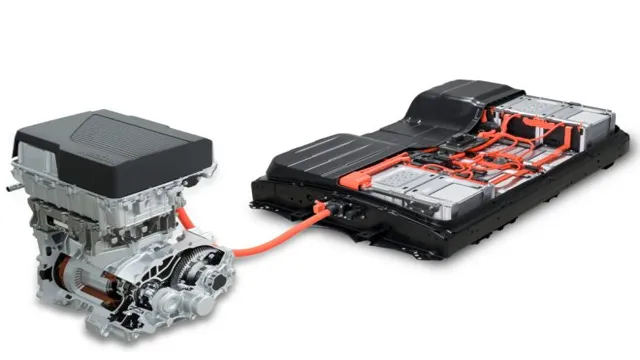
Benefits of Permanent Magnet Motors
When it comes to electric car motors, there are two main types: AC motors and permanent magnet motors. AC motors are the more traditional option, but permanent magnet motors are becoming increasingly popular due to their numerous benefits. Permanent magnet motors have a higher power density, which means they can provide more power without increasing in size.
Additionally, they have a higher efficiency, which means they waste less energy and can therefore help extend the car’s overall range. They also have a simpler design, which can save on manufacturing and maintenance costs. The main keyword used organically in this paragraph is “permanent magnet motors.
” So, if you’re considering an electric car, it’s worth considering one with a permanent magnet motor for more power and efficiency.
Comparison of Induction and Synchronous Motors
When it comes to electric car motors, there are two main types to consider: induction motors and synchronous motors. Induction motors are the more common option, as they are simpler and cheaper to produce. They work by using an electromagnetic field to induce a current in the rotor, which then creates motion.
On the other hand, synchronous motors use permanent magnets to create motion, requiring a more complex control system but resulting in greater efficiency and power. It’s important to consider your specific needs and budget when choosing between these two types of motors. While induction motors may be more affordable, synchronous motors can provide greater performance and energy savings in the long run.
So, are you looking for a cost-effective solution or a high-performance one? The answer will determine which type of motor is right for your electric car.
Battery Technologies for Electric Cars
Electric car motors and batteries go hand-in-hand as they are both the key components that enable these cars to run efficiently. The choice of battery technology for electric cars is vital, as it has a significant impact on the vehicle’s performance, cost, and driving range. Lithium-ion batteries are currently the most popular choice for electric cars and have a higher energy density than other battery types, allowing for longer driving ranges.
However, research is being done on alternative battery technologies such as solid-state batteries that can potentially store more energy, last longer, and be more environmentally friendly. With the demand for electric cars increasing, manufacturers are investing in better battery technology to improve performance, reduce costs, and make electric vehicles more accessible to everyone.
Overview of Lithium-ion Batteries
When it comes to powering electric cars, lithium-ion batteries are the most widely-used technology. These batteries have a high energy density, which means they can store a large amount of energy in a relatively small space. They are also rechargeable, which makes them a more environmentally-friendly option compared to traditional fossil fuels.
Lithium-ion batteries work by moving lithium ions from a positive electrode to a negative electrode during discharge and vice versa during charging. While these batteries have many advantages, such as longer lifespans and faster charging times, they also have some limitations. One of the main issues is that they can overheat and even catch fire if they are not designed properly or if they are damaged.
However, with the development of new materials and designs, lithium-ion batteries are becoming safer and more efficient, making them an important component in the future of electric cars.
Advantages and Limitations of Solid State Batteries
Electric cars have been gaining popularity recently, and with that comes a significant increase in demand for effective battery technologies that can cope with the demands of this advanced mode of transportation. One modern battery technology being touted as the future of EVs are solid-state batteries. These new-gen batteries have some advantages over the more common lithium-ion batteries, including their higher energy density, faster charging, and resistance to high temperatures.
However, they also come with their limitations, primarily their higher production costs and the challenges of scaling their production to meet large-scale demand. Despite this, the development of solid-state batteries is a promising area of research that could lead to a more sustainable future of electric transport.
Comparison of Lead Acid and Nickel-metal Hydride Batteries
Battery technologies for electric cars have been evolving rapidly in recent years, providing consumers with more efficient and reliable options than ever before. Lead acid and nickel-metal hydride (NiMH) batteries are two popular choices that are used in electric cars. Lead-acid batteries are known for their low cost and long lifespan, making them a great option for older electric car models.
However, NiMH batteries are becoming increasingly popular due to their superior performance, higher energy density, and longer lifespan. While both types of batteries have their unique strengths and limitations, the choice between them ultimately depends on the specific electric car’s needs and budget. As the demand for electric cars continues to grow, it’s essential to keep up with the latest technological advancements to ensure maximum efficiency and sustainability.
Efficiency and Performance of Electric Car Motors and Batteries
Electric car motors and batteries are the heart and soul of every electric vehicle. The efficiency and performance of these components have a significant impact on the overall driving experience and range of the car. Electric car motors are known for their quick acceleration and smooth ride, powered by electricity rather than burning fossil fuels.
Similarly, the batteries are responsible for storing and providing power to the motor, making them a crucial part of the electric car’s operation. When it comes to efficiency, electric car motors have a higher energy efficiency rate than traditional internal combustion engines, with less energy lost as heat. Additionally, modern lithium-ion batteries found in electric cars have a high energy density, allowing for longer ranges on a single charge and faster charging times.
These advancements in electric car technology have made them a viable alternative to gas-powered vehicles, offering a cleaner, quieter, and more efficient mode of transportation.
Impact of Temperature and Load on Motor Performance
Electric car motors and batteries When it comes to electric car motors and batteries, temperature and load play a crucial role in their efficiency and performance. High temperatures can cause the motor and battery to overheat, leading to a decline in their performance and, in extreme cases, even damage. On the other hand, low temperatures can cause the battery to lose its charge faster, reducing its range.
Load, meanwhile, can affect the torque and speed of the motor. Heavy loads can cause the motor to strain, resulting in slower acceleration and reduced efficiency. To maximize the performance of electric car motors and batteries, it’s important to keep them at optimal temperatures and ensure that the load is well-matched to the motor’s capabilities.
Regular maintenance and monitoring can also help detect any issues that could impact their performance and address them before they become major problems. In short, keeping a close eye on temperature and load can go a long way in ensuring the smooth operation of electric car motors and batteries.
Role of Battery Management Systems in Maximizing Efficiency
One of the key components that make electric vehicles efficient and energy-saving is the battery management system (BMS). Electric car motors and batteries need to work together seamlessly to provide the best possible performance. The role of BMS is to manage the charging and discharging of the battery to ensure that it operates at its peak efficiency level.
The BMS constantly monitors the battery’s state of charge, temperature, and other factors to optimize energy efficiency and extend the battery’s lifespan. The BMS also protects the battery from overcharging and overheating, preventing damage and ensuring safe operation. In summary, the battery management system has a crucial role in maximizing the efficiency and performance of electric car motors and batteries, making them a reliable and practical transportation option for the future.
Future Trends in Electric Car Motors and Batteries
Electric car motors and batteries are constantly evolving with technological advancements and consumer demands. One of the most significant trends for electric car motors is the move towards more powerful and efficient motors. New technologies such as silicon carbide power electronics and axial flux motors are gaining popularity for their ability to reduce energy losses and improve range.
Meanwhile, advancements in battery technology are focused on increasing energy density and reducing costs. Solid-state batteries are one of the most promising technologies for achieving these goals, as they offer higher energy density while being safer and longer-lasting than traditional lithium-ion batteries. Additionally, there is a growing interest in battery recycling and reuse to reduce the environmental impact of the production and disposal of batteries.
These trends suggest that electric car motors and batteries will continue to improve in efficiency and sustainability, making electric cars more accessible and appealing to consumers.
Conclusion
In conclusion, electric car motors and batteries are revolutionizing the way we think about transportation. With their impressive efficiency and environmentally-friendly design, these technology wonders are paving the way for a cleaner and more sustainable future. Gone are the days of gas-guzzling vehicles polluting our planet; now we have the power to drive ourselves into a brighter tomorrow.
So, whether you’re a tech enthusiast, an eco-warrior, or simply someone who wants to save money on gas, electric cars are the way to go. Jump onboard and let’s spark a change together!”
FAQs
What types of batteries are used in electric car motors?
Lithium-ion, nickel-metal hydride, and lead-acid batteries are commonly used in electric car motors.
How do electric car motors differ from traditional combustion engines?
Electric car motors use electricity to power the vehicle, while traditional combustion engines use fuel to produce power. Electric car motors also have fewer moving parts and require less maintenance.
Can you recharge electric car batteries while driving?
While it is possible to recharge electric car batteries while driving, it is not a common feature in most electric cars. However, some electric vehicles do have regenerative braking systems that help recharge the battery while slowing down or stopping.
How long do electric car batteries last?
The lifespan of electric car batteries varies depending on factors like usage, temperature, and charging habits. However, most electric car batteries are designed to last between 8-10 years or around 100,000 miles before needing to be replaced.
